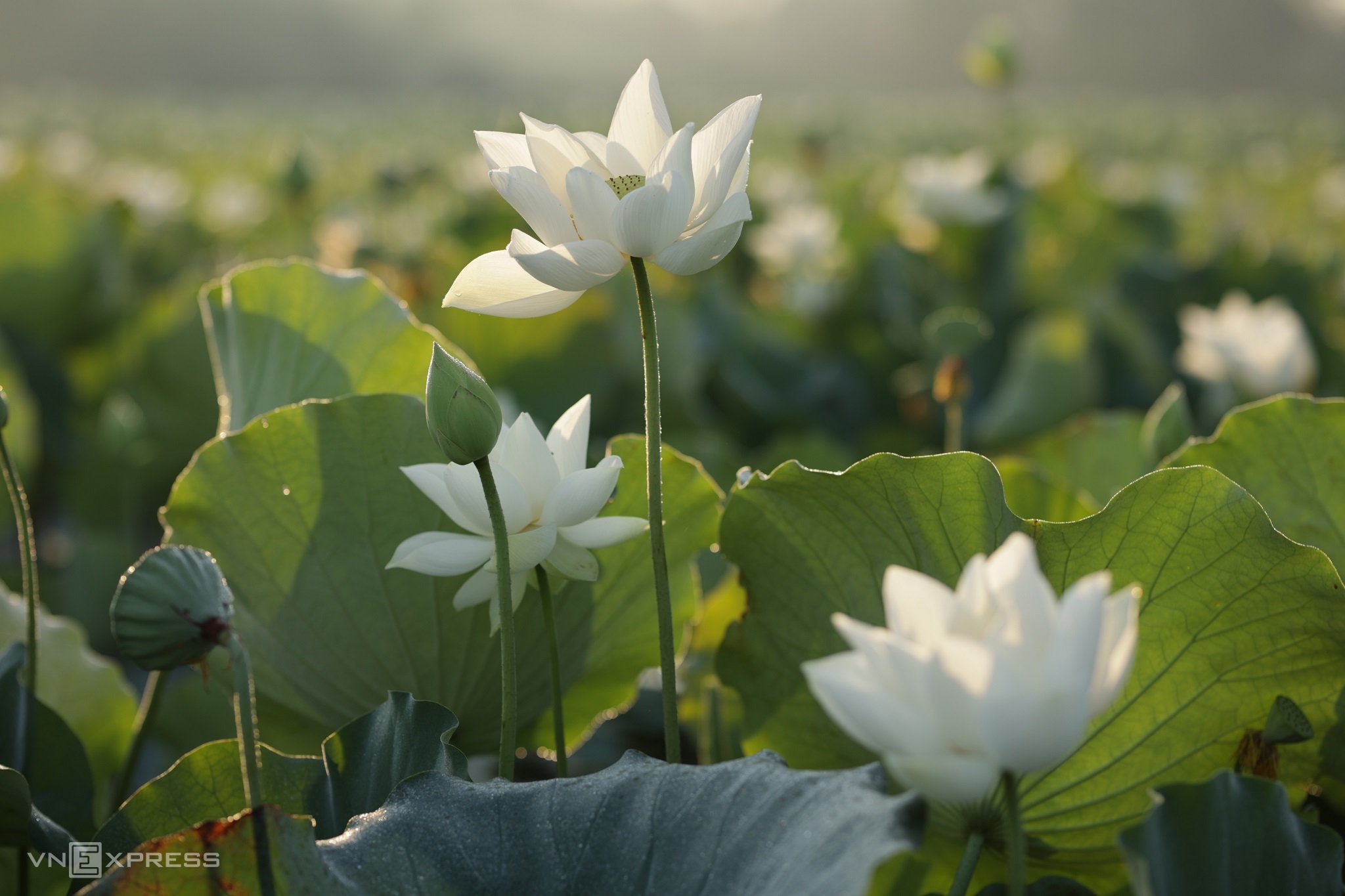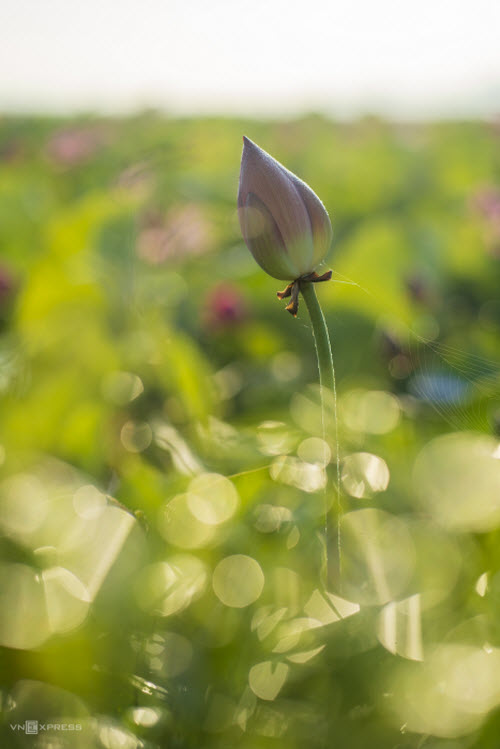
At this time of year lotuses are at their beautiful best on the outskirts of central tourist town Hue.
At this time of year lotuses are at their beautiful best on the outskirts of central tourist town Hue.
 |
|
A woman rides past a lotus pond in La Chu Village of Huong Tra Town, around 12 kilometers from downtown Hue. Lotus season lasts from late May until August, attracting photographers to Hue, former seat of Nguyen Dynasty, the last royal family to rule the country from 1802 to 1945. |
 |
| Kelvin Long, a native of Hue, who shot the photos said at the end of May, lotuses here enter full bloom. In addition to the familiar lotus ponds within the iconic Hue Imperial Citadel, visitors can find others in suburbs like Huong Tra and Huong Thuy towns and Quang Dien District. |
 |
| In Quang Loi Commune, pink lotuses are mainly grown for their seeds and flowers. Fresh unpeeled lotus seeds are sold for VND45,000-50,000 ($1.94-2.16) a kilogram, with prices rising to VND55,000 a kilo by the end of the harvest. |
 |
| In addition to pink lotuses, Hue is famous for white lotus flowers, which can be found at Tinh Tam Lake, a famous attraction in Hue and close to the tomb of King Minh Mang, the second Nguyen ruler, reigning from 1820 to 1839. Pink and white lotuses are typically used to worship Buddha. |
 |
| Hue locals are expanding lotus production as a way to improve their livelihoods. Lotuses are mainly grown in the localities of Hue, Phu Vang, Phu Loc, Phong Dien, Quang Dien, Huong Tra and Huong Thuy. The lotus is considered Vietnam's national flower, representing both purity and dignity. |
(Source: VNexpress)





